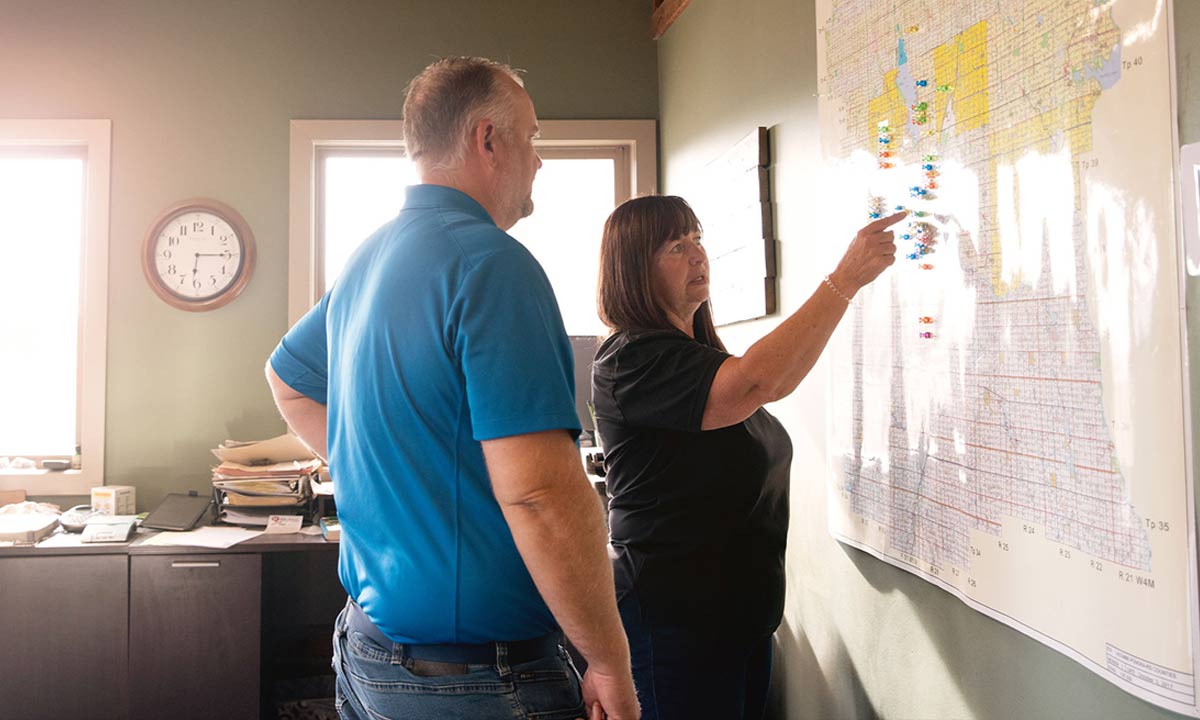Today’s rising equipment prices, more expensive inputs and high farmland prices might suggest that only the very biggest farms will have the resources to prosper in the future.
However, if a farmer has been on a growth path in recent years but now wants to take their foot off the gas, the news is good: Canadian agriculture is showing that, with the right approach, an average-sized farm can still make a solid living.
For starters, Mark Verwey, National Agriculture Leader with BDO, believes the bigger-is-better maxim needs to be vigorously challenged.
“You shouldn’t grow just for the sake of growth,” explains Verwey. “We’ve done lots of benchmarking of farms and we’ve seen that growth doesn’t guarantee success. We have some smaller farms — 1,500 to 2,000 acres — and they’re doing fantastic.”
How is it that these successful farms resist the pressure to grow? Verwey offers these insights:
1. Bigger isn’t always better
One rationale for growth is that having more acres allows the farmer to spread out costs and thus reduce costs per acre. “Sometimes it can almost be the reverse,” he says.
“Some farms get too big and you start to have leakage. You might have a harder time controlling your input and labour costs. As well, managing a large enterprise in terms of labour might prove to be too much.”
2. Equipment efficiency matters
Successful mid-sized farms tend to have the right amount of equipment to fit their needs. It’s a fine balance that might take years to get right and plenty of effort to keep on track.
“Some producers also have a really good program of repair and maintenance to keep their existing equipment working for as long as possible,” says Verwey.
3. Input costs even the playing field
Mid-sized producers are effective at managing operating costs like seed, fertilizer, chemicals and insurance.
“This is another reason a larger farm might not be as profitable as you might think,” Verwey says. “If you can manage those costs, regardless of your size, there is no economy of scale in that. It’s still the same percentage of your revenue for inputs and getting bigger is not going to spread that out.”
4. Get more from the land you have
In Verwey’s view, one reason farmland prices are rocketing higher is that buyers are trying to get ahead of expected interest rate increases. This approach may mean farmers buy land at what might later prove to be the peak of the market. “I wouldn’t be that aggressive,” Verwey says.
With land prices so high, Verwey sees mid-sized farmers working and investing to increase the productivity of their current land base. Tiling for drainage purposes is one example, with this improvement paid for by higher yields in the future.
5. Old-fashioned agricultural thrift
Even if buying land and new equipment is financially feasible, there’s a certain farm management mindset that prefers to keep the pocketbook shut. Some farmers will spend time trying to find a creative workaround that requires less investment. “These farmers are resourceful,” says Verwey, “about making do.”
While the general perception might be that farm sizes have to grow, Canadian agriculture’s resourceful middle class seems happy with what it has today. They’re making decisions carefully, optimizing their land and equipment and enjoying peace of mind.
“Some producers like the idea of staying in a holding pattern, building up an emergency fund and strengthening your financial ratios so you can weather these storms.”
Want to take your agri-business to the next level? Check out the new University of Guelph Foundations in Agricultural Management course, created in collaboration with RBC & Farm Credit Canada. Invest in your Business. Invest in Yourself.
This article is intended as general information only and is not to be relied upon as constituting legal, financial or other professional advice. A professional advisor should be consulted regarding your specific situation. Information presented is believed to be factual and up-to-date but we do not guarantee its accuracy and it should not be regarded as a complete analysis of the subjects discussed. All expressions of opinion reflect the judgment of the authors as of the date of publication and are subject to change. No endorsement of any third parties or their advice, opinions, information, products or services is expressly given or implied by Royal Bank of Canada or any of its affiliates.



















